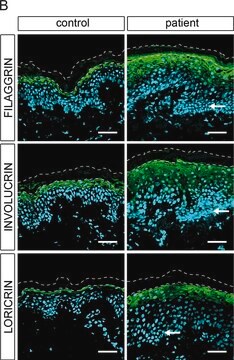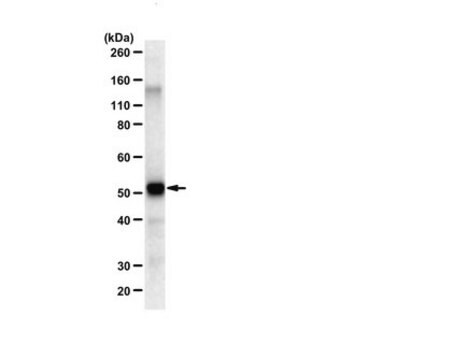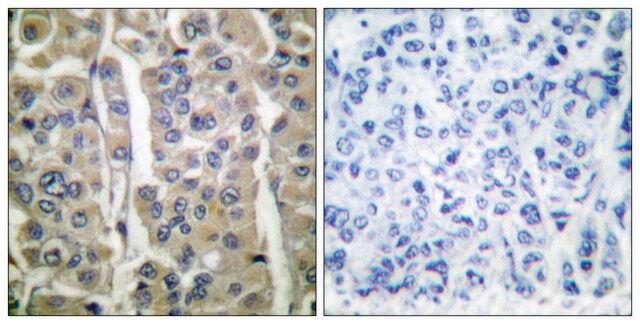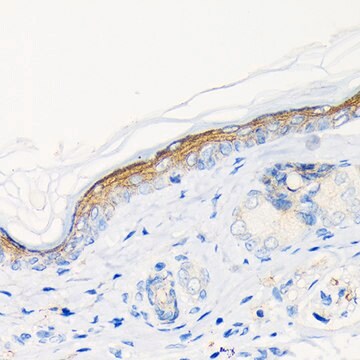SAB4200794
Anti-Involucrin antibody, Mouse monoclonal
clone SY5, purified from hybridoma cell culture
Synonyme(s) :
Anti-IVL
About This Item
Produits recommandés
Source biologique
mouse
Niveau de qualité
Forme d'anticorps
purified from hybridoma cell culture
Type de produit anticorps
primary antibodies
Clone
SY5, monoclonal
Forme
buffered aqueous solution
Poids mol.
~68 kDa
Espèces réactives
canine, gorilla, porcine, mouse, human, owl monkey
Concentration
~1 mg/mL
Technique(s)
immunoblotting: suitable
immunofluorescence: suitable
immunohistochemistry: 2.5-5 μg/mL using human skin sections
immunoprecipitation (IP): suitable
Isotype
IgG1
Numéro d'accès UniProt
Conditions d'expédition
dry ice
Température de stockage
−20°C
Modification post-traductionnelle de la cible
unmodified
Informations sur le gène
human ... IVL(3713)
Description générale
In pathological conditions, involucrin expression may be altered. In psoriasis and other benign epidermal hyperplasias, involucrin expression appears closer to the basal layer than it′s normal expression. In squamous cell carcinomas and premalignant lesions, involucrin is abnormally increases and found to be reduced in severe dysplasias of the larynx and cervix.
Monoclonal Anti-Involucrin specifically recognizes human and mouse Involucrin. The antibody does not react with mouse epidermis, thus enabling the use of the antibody for study of human xenografts in nude mice. The antibody stains the upper spinous and granular layers in human skin and the cytoplasm of suprabasal terminally differentiated keratinocytes in stratified colonies.
Immunogène
Application
- Immunoblot
- Immunofluorescence
- Immunohistochemistry
- Immunoprecipitation
Actions biochimiques/physiologiques
Forme physique
Autres remarques
Vous ne trouvez pas le bon produit ?
Essayez notre Outil de sélection de produits.
Code de la classe de stockage
12 - Non Combustible Liquids
Classe de danger pour l'eau (WGK)
WGK 1
Certificats d'analyse (COA)
Recherchez un Certificats d'analyse (COA) en saisissant le numéro de lot du produit. Les numéros de lot figurent sur l'étiquette du produit après les mots "Lot" ou "Batch".
Déjà en possession de ce produit ?
Retrouvez la documentation relative aux produits que vous avez récemment achetés dans la Bibliothèque de documents.
Notre équipe de scientifiques dispose d'une expérience dans tous les secteurs de la recherche, notamment en sciences de la vie, science des matériaux, synthèse chimique, chromatographie, analyse et dans de nombreux autres domaines..
Contacter notre Service technique








